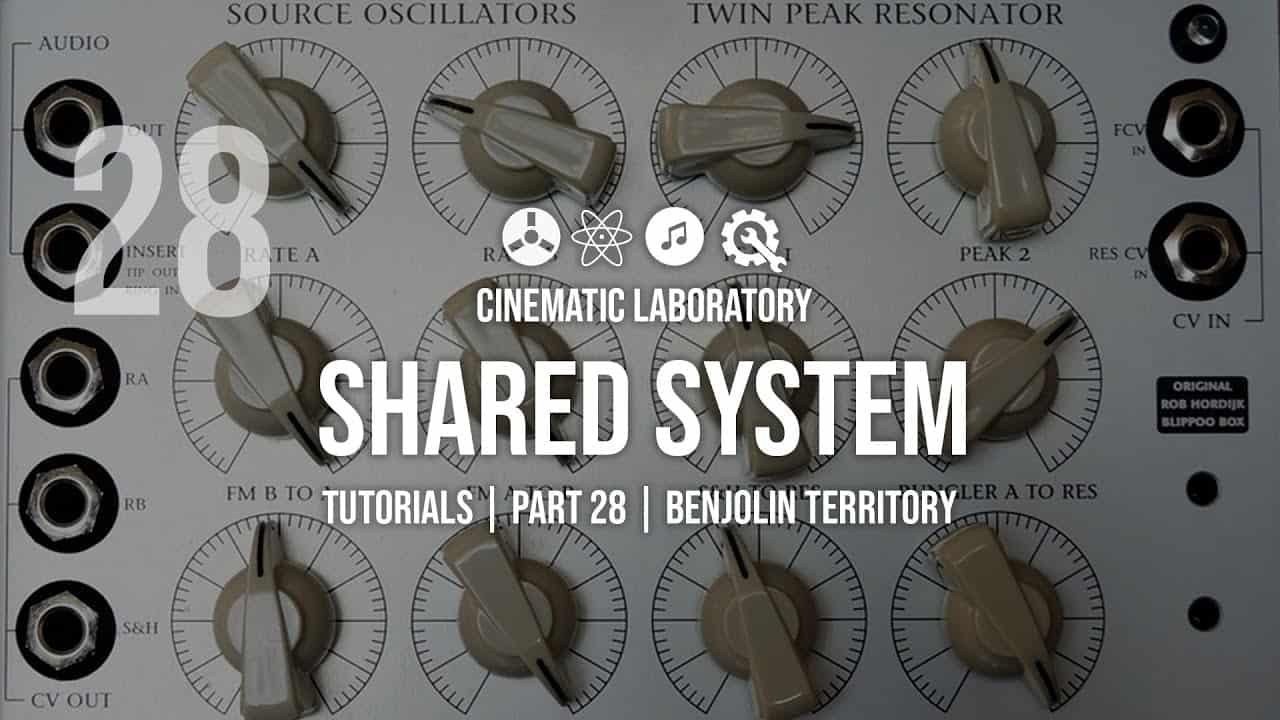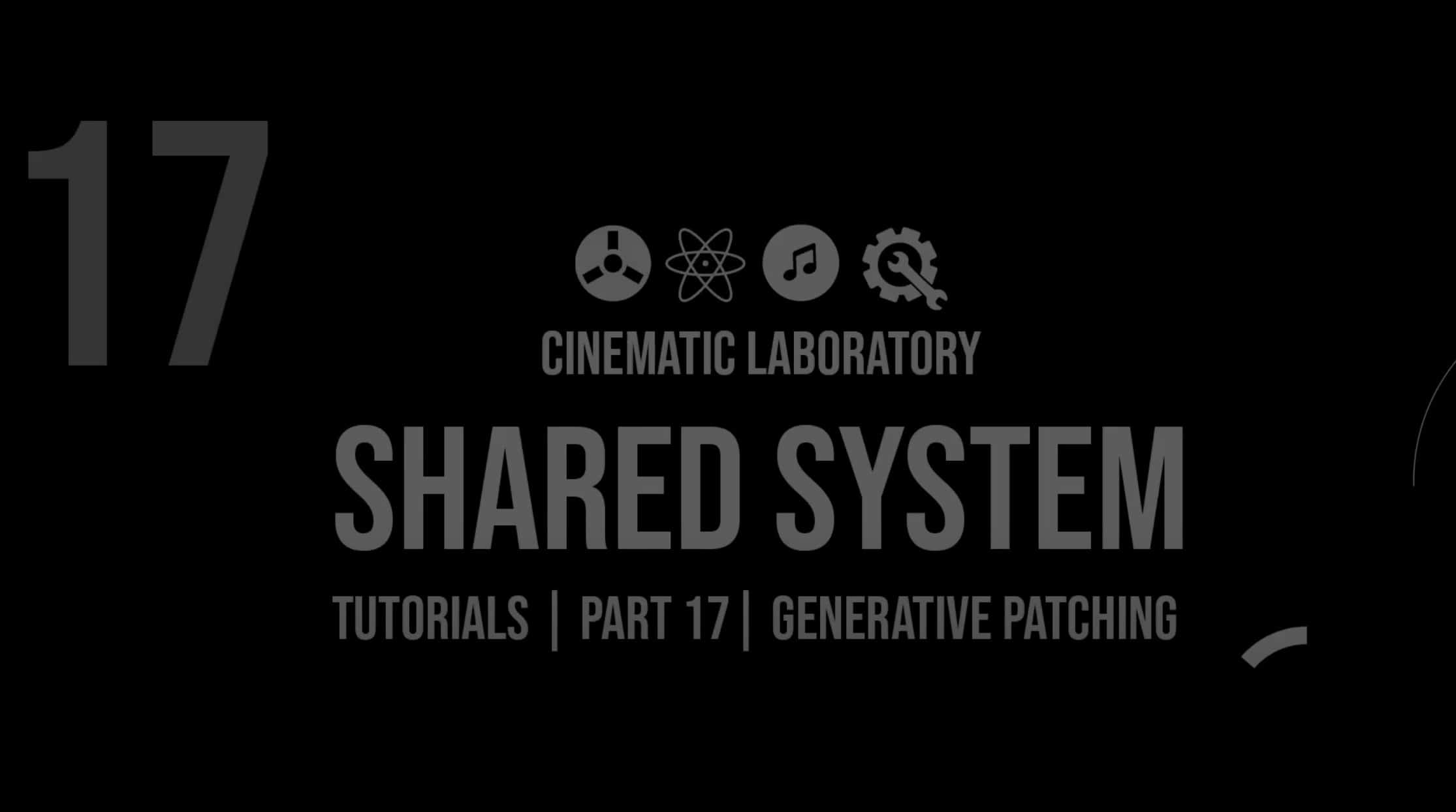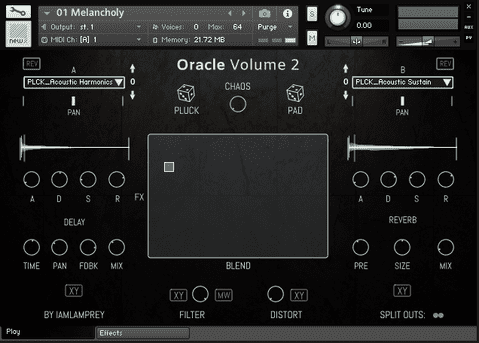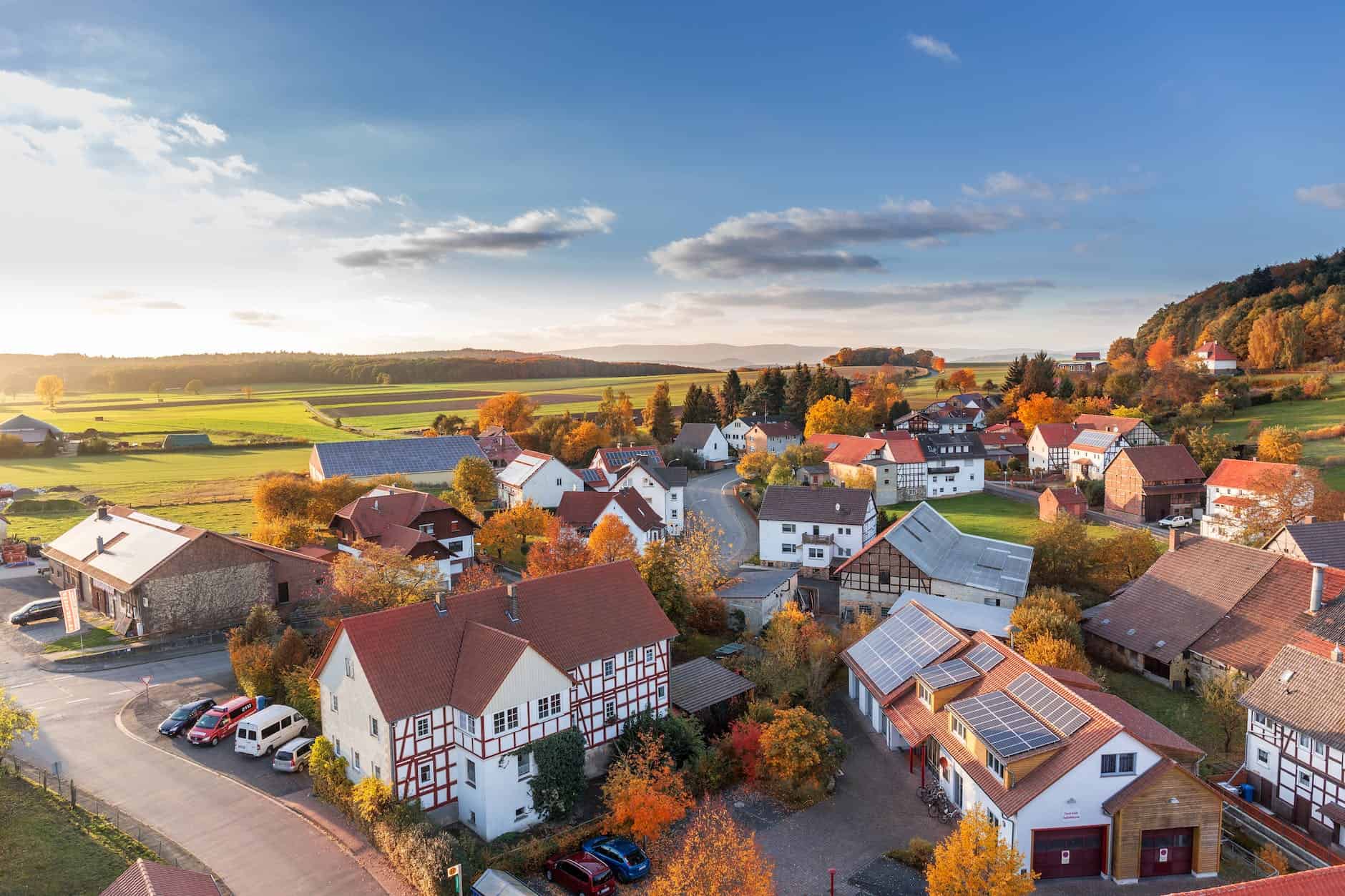After Later Audio
Benjolin V2 | After Later Audio
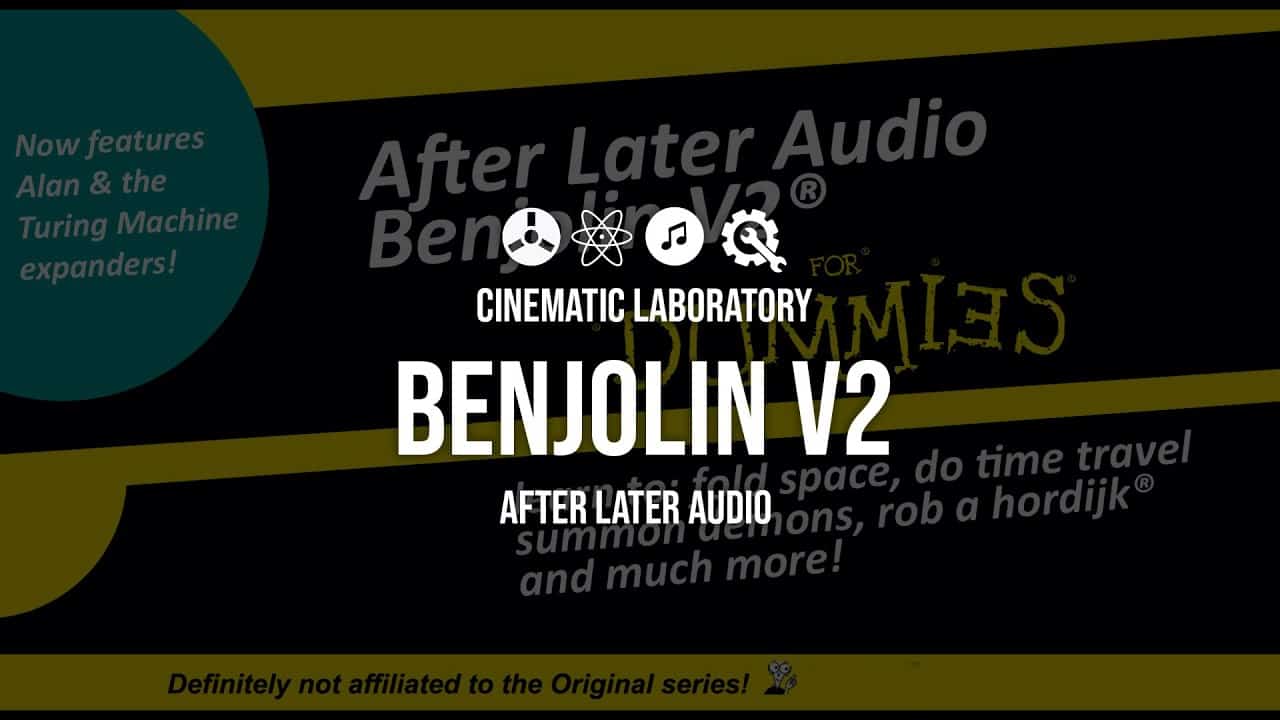
The Benjolin has been around for a long time in many shapes, sizes, and forms. It’s described as a chaos machine, so don’t expect beautiful melodies and soundscapes at the first patch. However, it’s pretty amazing what you can do with it once you figure out the Rungler, a melodic noise engine. After Later Audio’s V2 has expanders you can use to further extend the Benjolin’s potential and turn it into a random beat making engine. It can even do ambient when you slow it down. So try to make it to the end of the video for all applications! I am always saving the best for last.
While waiting on the Benjolin’s arrival I also experimented with Maths and the Wogglebug from MakeNoise, with interesting results. There’s a card linked to the video and a card where Rob Hordijk – Benjolin’s designer – explains why he created the Rungler.
After Later Audio
After Later Audio Expands with TILT, STEPS, BLEND their Heritage Line
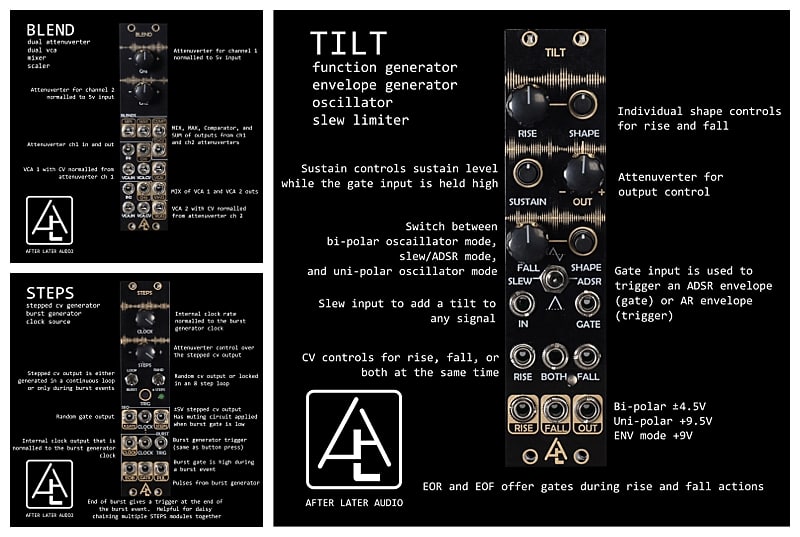
After Later Audio’s TILT, STEPS, BLEND
After Later Audio added three new members to our Heritage line. The focus with these modules continues with the Heritage Line design goals of offering compact, dense functionality, and accessible price point. When coupled with bOSC, ENVy, and FILThy this now turns the Heritage line into a complete voice. Below are some introductions to each module and a video from DivKid (See below) with an initial walkthrough on each module.
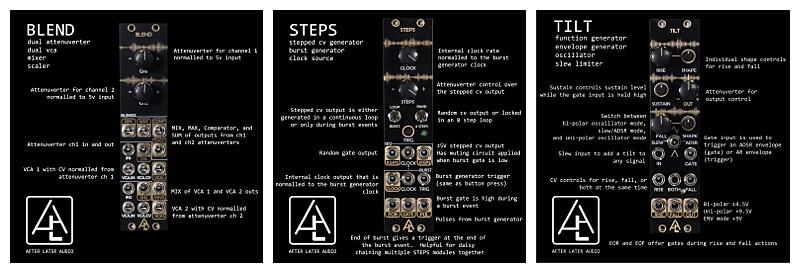
TILT
A function generator, ADSR envelope generator, and slew limiter.
TILT is the After Later Audio take on the traditional Slope Generator module initially introduced by Serge back in the 1970s. The module is really a jack of all trades as it can be a slew limiter, envelope generator, an oscillator (both LFO and audio rate), and function generator.
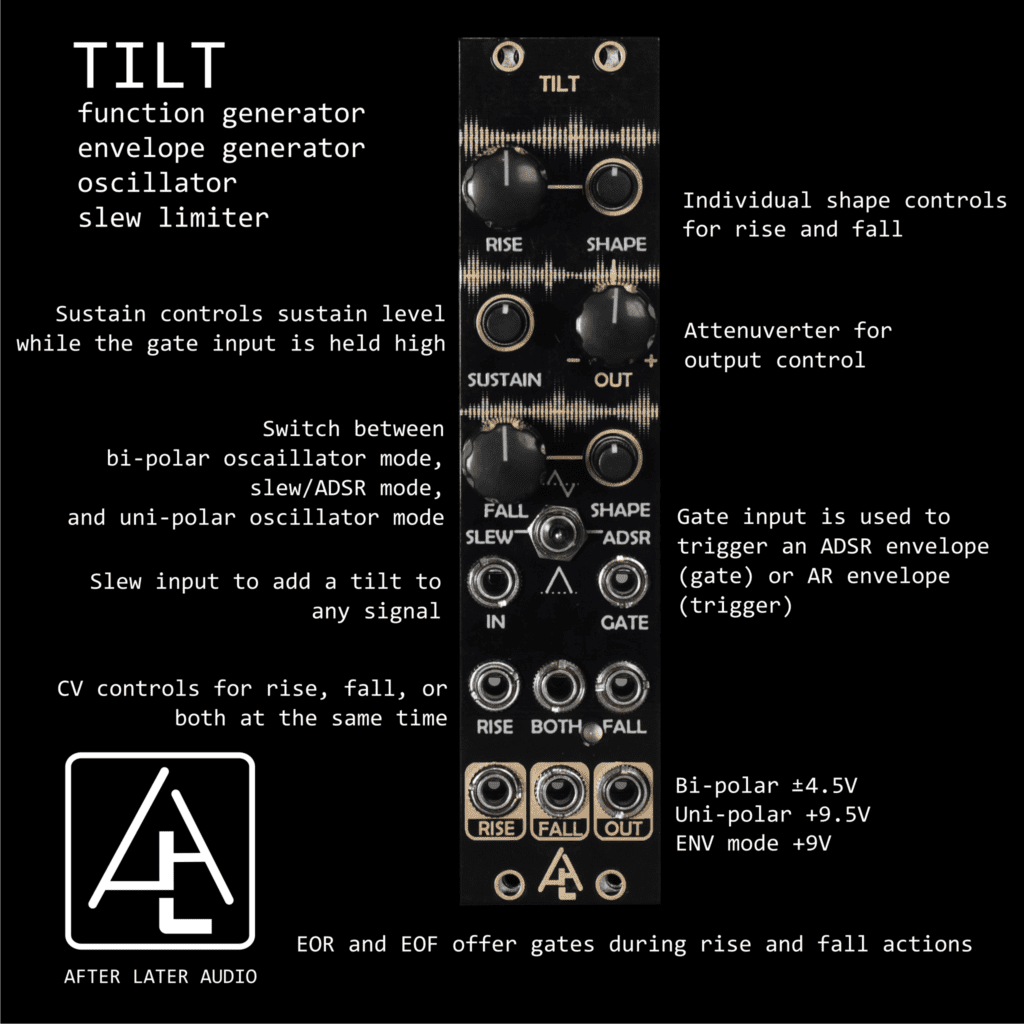
This stays true to the original design by offering both a unipolar and bipolar output while adding separate controls for exp/log for both rise and fall and a gate/sustain function to get full ADSR envelopes.
The rise output is high during the rising portion of the cycle and fall output is high during the falling portion of the cycle.
Use the IN input to get standard slew limiter functionality. Use the GATE input to trigger an ADSR envelope and then use the sustain control to control the level of the sustain. Rise will control the attack and fall controls both the decay and release times. You can also use the GATE input while using a cycle mode and this will adjust the 0V level to the sustain level. This gets some great effects with audio rate frequencies on the on the rise/fall controls.
STEPS
Random Looping Stepped CV Generator and Burst Generator
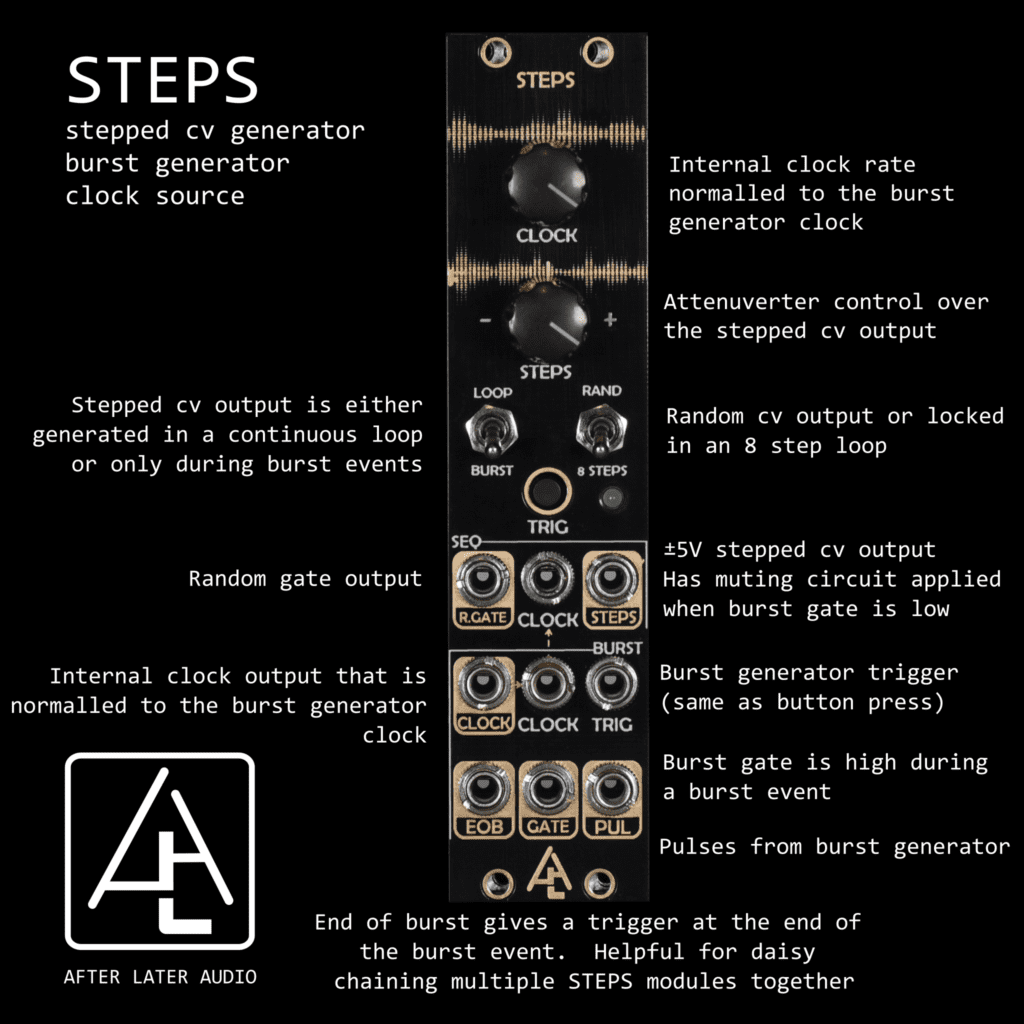
You can either use this as a random stepped CV source or as a repeating 8 stepped CV source. You then can trigger the burst generator to play the 8 step loop or 8 random steps. All of this can use the internal or external clock signals. To get more complex patterns you can daisy chain STEPS modules together by tying together their clocks and sending EOB to TRIG. This way you can generate 16 step patterns (or longer).
When first turning on STEPS you will need to run the module in RAND mode for at least 8 steps to fill the shift register with data.
STEPS has three functional blocks:
Internal clock
- Rate control and output
Burst generator
- Pulses output which generates 8 pulses on every trigger
- Gate output which is high during the burst event
- EOB output which fires at the end of a burst event
Random Looping Stepped CV Generator
- R.gate output outputs a random gate during a burst event
- Random stepped output or a loop of 8 steps.
- Steps output with attenuverter. The Steps output is held low while there is no burst event.
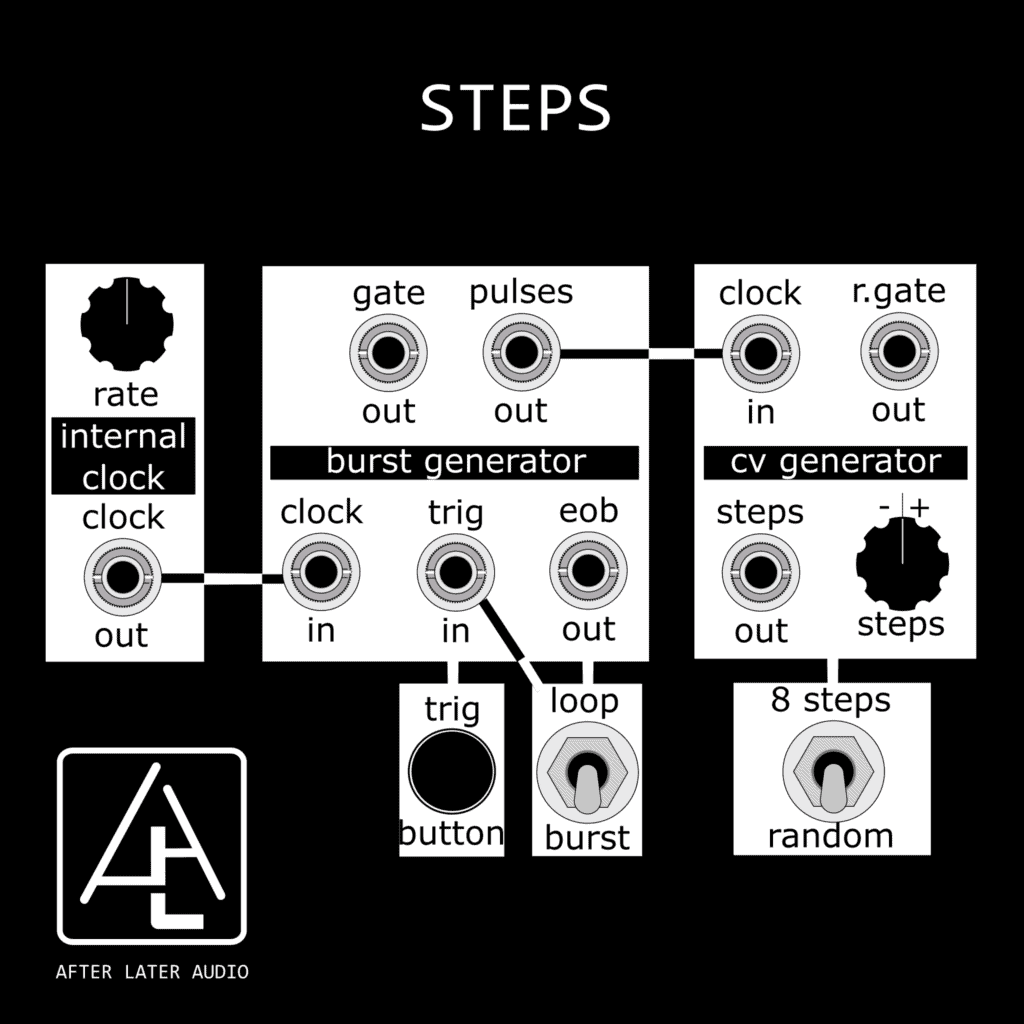
BLEND
CV/Audio Mixer and Dual VCA
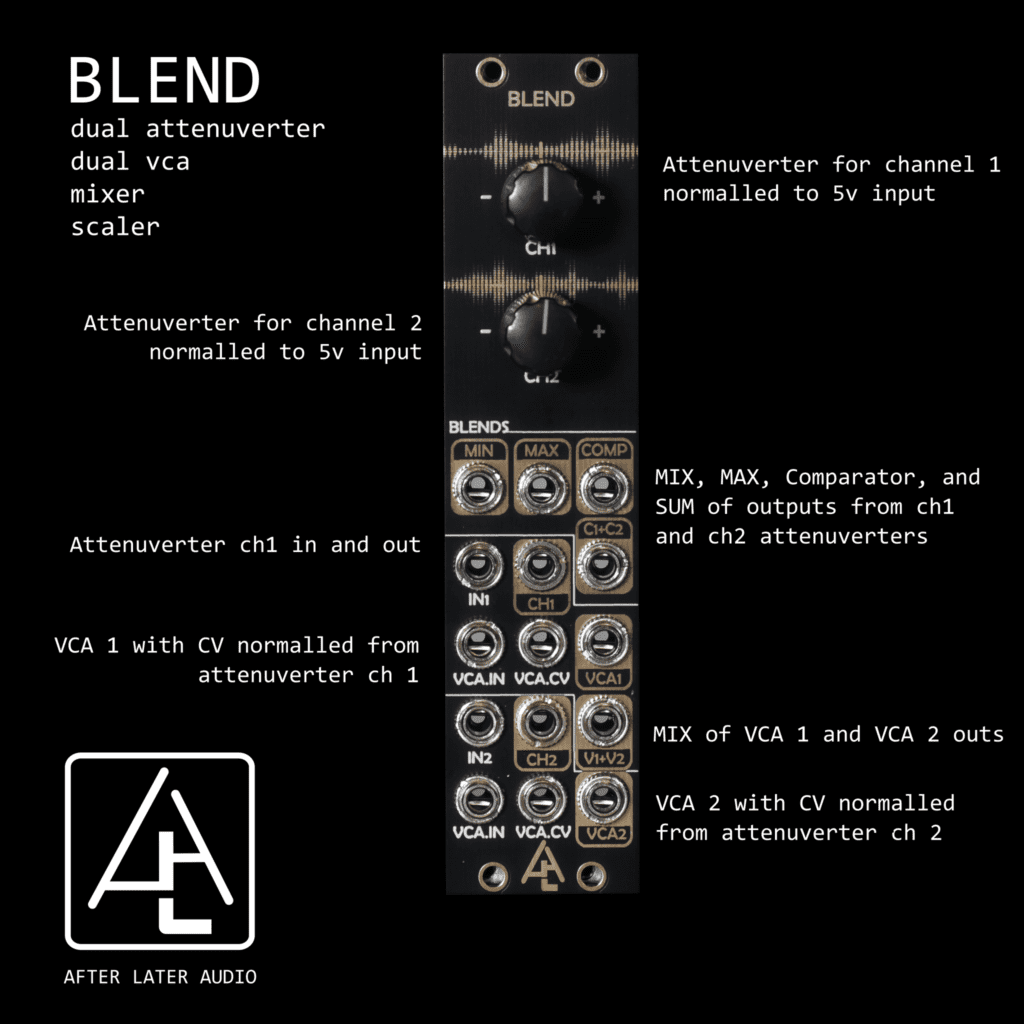
CV sections
Blend has two CV sections each with:
- Input (normalled to a +5V signal)
- Attenuverter
- Output
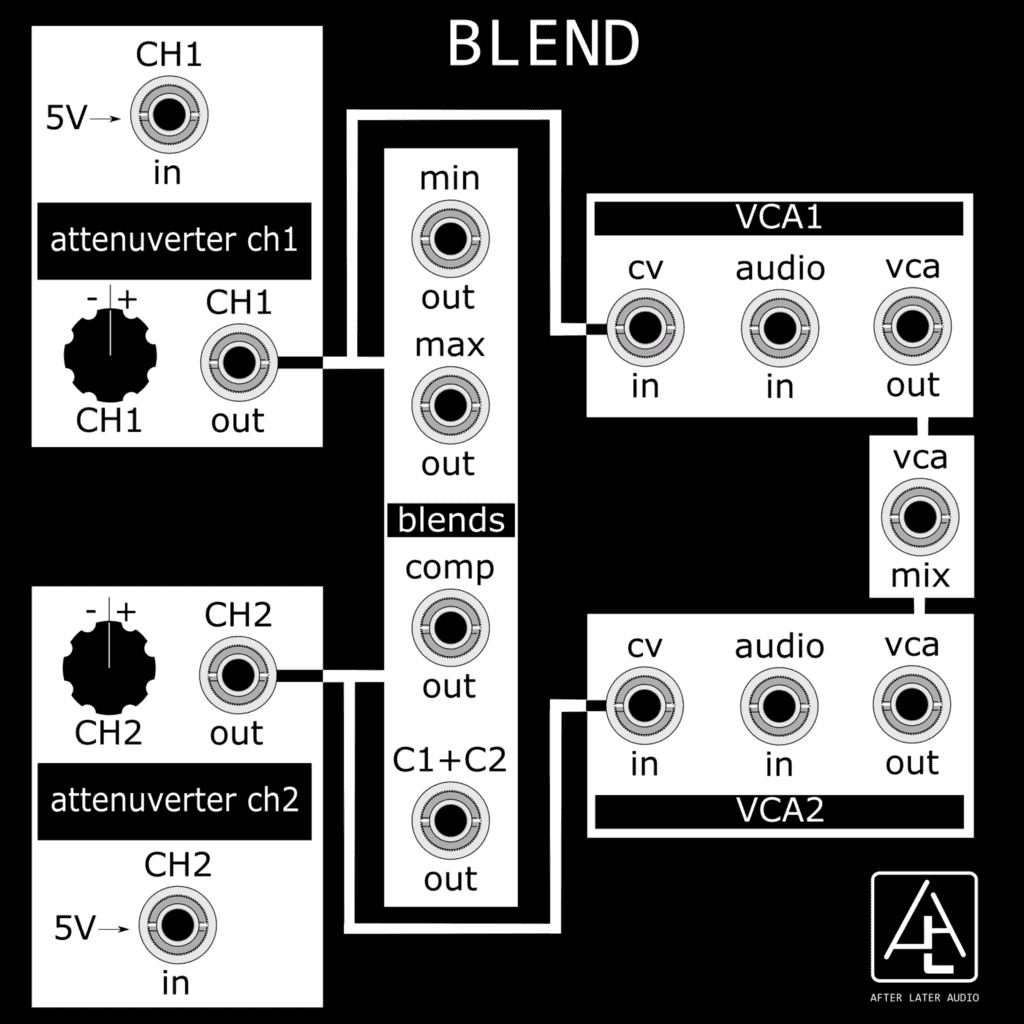
CV Mixer section
Blend takes the outputs of the two CV sections and offers the following:
- Min output
- Max output
- Comparator output (level brought down to 4.5V)
- Sum output
The min and max sections do not attempt to be precision min/max measurements. They will be within two diode drops of the actual min or max voltage.
VCA Sections
There are two VCA sections that also have a mixed output. The CV input for each VCA is normalled to the output of a CV section. The VCA circuits are LM13700 based so they will slightly color the sound. The response curve is nearly linear but offers a slight exponential curve.
Company Video
Pricing and Availability
eurorack
After Later Audio Launching New Dual VCA, Function Generator and CV Stepper Modules
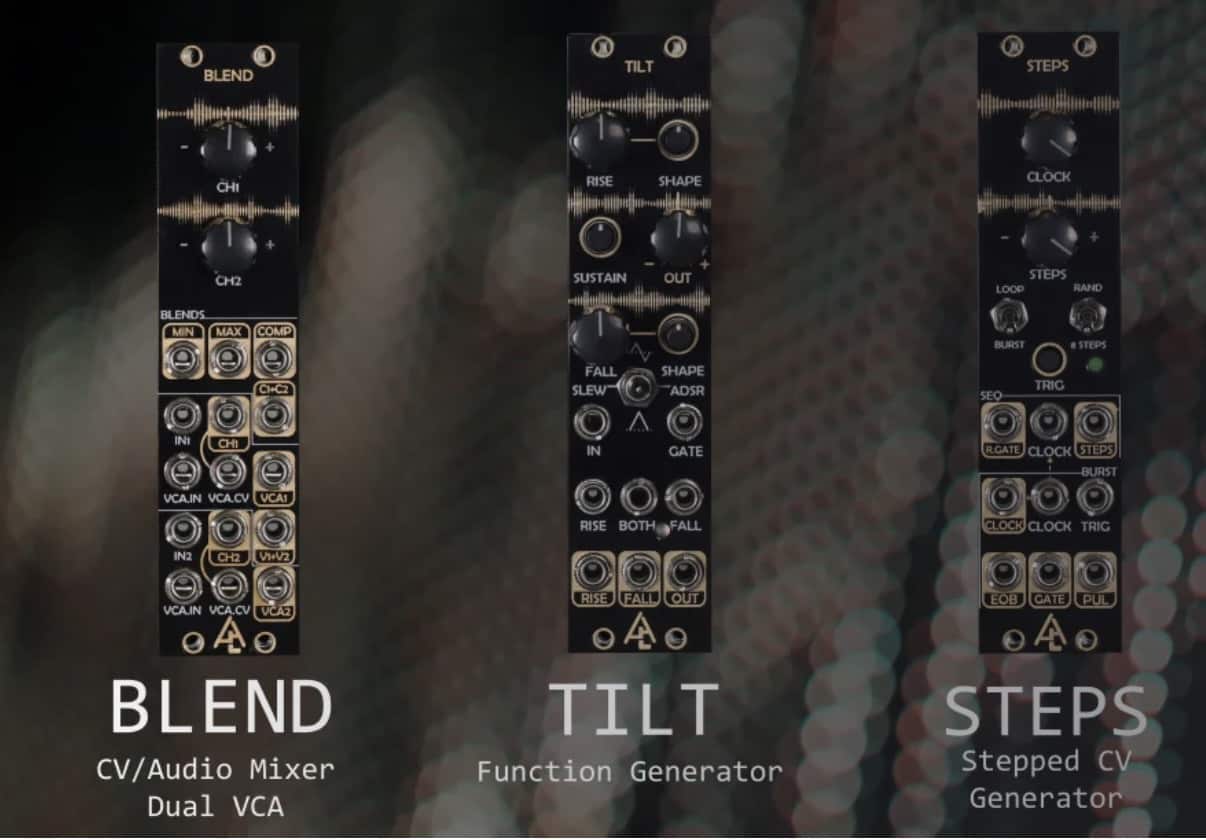
After Later Audio New Dual VCA, Function Generator and CV Stepper
After Later Audio is launching three new modules BLEND, TILT, and STEPS.
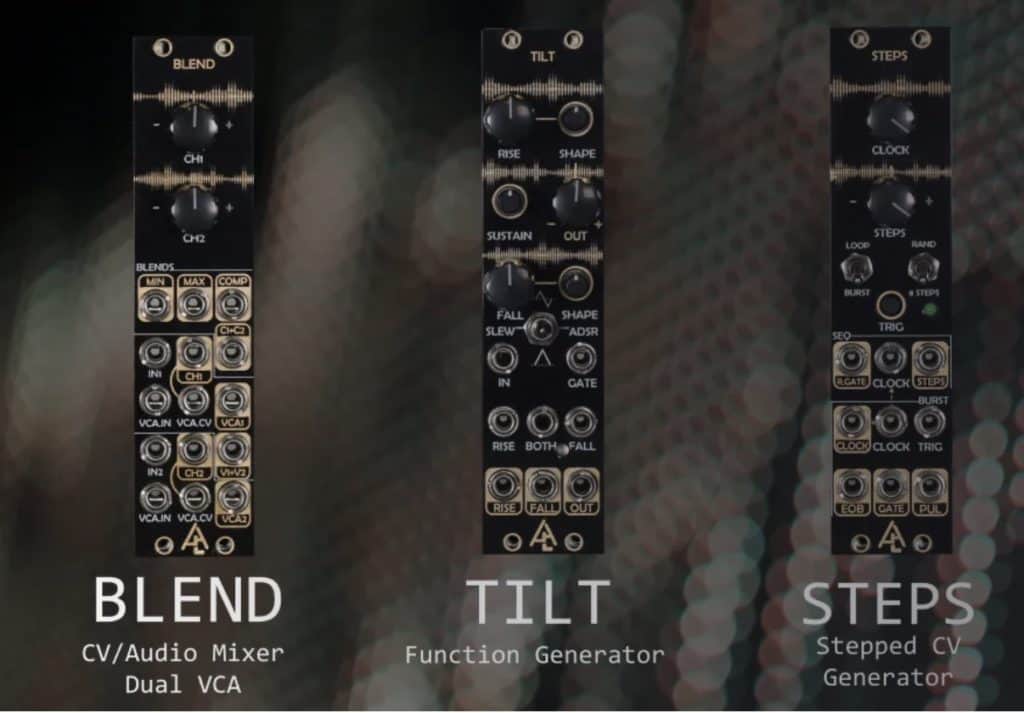
About After Later Audio
Boutique audio company located in Seattle, WA. Building eurorack mutable instruments and in house designs. Focused on modular, dedicated to quality.
The modules are planned for released later this week.
-

 Music Theory2 days ago
Music Theory2 days agoUnlocking Nature’s Harmony: The Power of 432 Hz Frequency in Sound & Music for Enhanced Living and Well-Being
-

 Sound Design5 days ago
Sound Design5 days agoWhat Is the Difference Between a Sound Engineer and A Sound Designer?
-

 Native Instruments Kontakt2 days ago
Native Instruments Kontakt2 days agoVOCAL AI – Animated Intelligence: The Ultimate Vocal Playground
-

 Sound Design5 days ago
Sound Design5 days agoWhy Sound Engineer
-
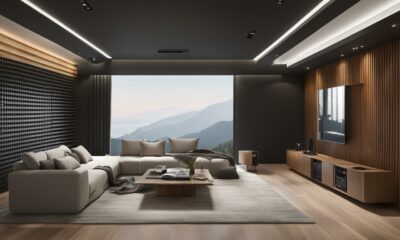
 Expert Guides3 months ago
Expert Guides3 months agoOptimize Your Space with Room Acoustic Treatment
-

 Vetted3 months ago
Vetted3 months ago11 Best Gore Websites to Explore the Darker Side of the Internet
-

 AI Generator3 months ago
AI Generator3 months agoCan Film Cameras Use Any Film?
-

 Expert Guides3 months ago
Expert Guides3 months agoAC Coupling: Enhance Your Solar Power System
